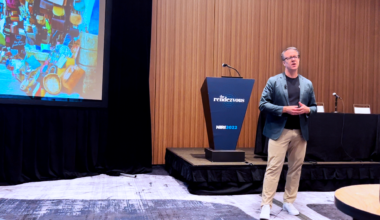While every IR professional has been affected by COVID-19, the important part is how you adapt to the reality of working remotely during this time. In our recent webinar with IR Magazine, we asked a panel of IR experts for their advice on how to communicate clearly and effectively with investors and analysts amid stock market uncertainty. The discussion resulted in a variety of questions from the attending IR community regarding challenges they’re currently facing. To help you better approach your digital IR program during COVID-19, we compiled a few of those questions along with what our panelists had to say on the matter.
How can we prepare for a virtual roadshow season? What tools do you recommend, and what do you foresee that we normally don’t take into consideration?
Elizabeth Saunders: Remember that it’s more difficult to hold someone’s attention online than in person. In light of this, it’s important to shorten your roadshow down to 6-8 slides and the rest can live in the appendix. When going into the call, especially if it’s an intro call, have 4-5 things prepared that you want to get across. That first intro call is often a gating call determining if you’re less risky than they thought and is there capital to support that. Additionally, have a list of questions that the new investor should be asking, and have the IRO pose those questions, ensuring the key questions to understanding your story have been asked.
Matt Tractenberg: Sometimes virtual meetings are viewed as more casual and presenters then prepare in a more casual manner. However, it’s imperative to prepare just as thoroughly and place as much value on them as if it were an in-person roadshow. This includes embracing video when and if you can. Being able to see the CEO and the passion or commitment on their face is hugely valuable. To the extent that you can leverage it, it’s always a good thing.
Once COVID-19 has passed, do you think companies are going to think about roadshows differently? Do you think investors will think about roadshows differently?
Jonathan Paterson: There has been a lot of hesitation about using video up until now. Past COVID-19, I think utilizing this type of media is going to be more accepted although it doesn’t always have to be a video. Sometimes even if it’s an introductory call to introduce the company and pitch your story, it can be just as useful as video. With that being said, I do think moving forward that conferences and roadshows will change and switch over to using more technology.
Elizabeth Saunders: Since we’re about to go through a whole earnings season and probably post-earnings conference season without the ability to travel, I think that video will catch on. Imagine what budget items you could get back in your IR budget if you cut 20% of travel and could deploy that in some other smart way.
How do you communicate in a compliant manner while still being helpful to your investors? How do you strike that balance in communication?
Elizabeth Saunders: This is a really compelling reason as to why companies need to put something out so that in 1:1 conversations you have something to say. First, if you don’t like the consensus estimates out there, it’s going to be very difficult to change them without a stake in the ground. Second, always have a second person on for those conversations.
Matt Tractenberg: The prospect of going dark on the investor community for the next 6 weeks is pretty challenging and daunting in this environment. Everyone is scrambling for information as to what happened and what is going to happen. With that in mind, if you can wrap up some books, in the middle of that quiet period releasing some metrics whether it be sales, growth rates or a margin profile. Give the investor community some sense of what took place, but reserve the conversation of what you believe will take place going forward for an earnings call. If you can give them something to settle them down between now and the middle of May, you’ll find it’s greatly appreciated and could decrease volatility.
In light of current circumstances, how can you best organize your AGM?
Elizabeth Saunder: In all likelihood, we’re going to be having a virtual AGM. There are instances where some companies are creating an abridged video version of the roadshow presentation. They’re then doing a virtual AGM and using that on the website for IR 101 as an easy link into the company. Most companies are considering virtual, some are downplaying it, and a few are trying to video parts and then repackage for the rest of the investor group.
Matt Tractenberg: Remember that laws change from state to state. Talk to your general counsel about where you’re domiciled and what laws are governed in that state in regards to general meetings. General meetings have requirements that regular meetings do not; they’re not open to the public, you have to vote, and so on. There are mechanisms with general meetings that require some sensitivity and so there are some nuances and technology elements you need to incorporate when shifting from in-person to virtual.
Thank you to moderator Ben Ashwell, Editor, IR Magazine and panelists Jonathan Paterson, Managing Partner at Harbor Access, Elizabeth Saunders, Partner at Claremont Partners and Matt Tractenberg, IR Partner at Q4. If you’re interested in learning more about making the most of your digital IR program during COVID-19, you can find an on-demand version of the webinar, here.


